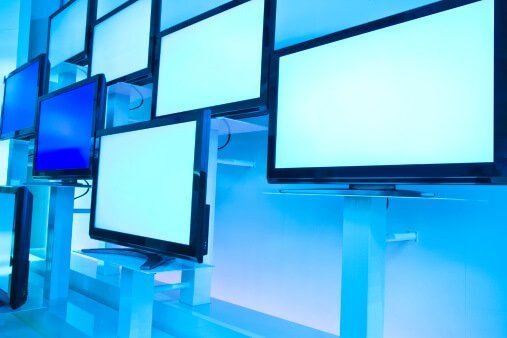Since August 2020, the price of color TV terminals has generally risen because the continuous increase in the price of LCD panels has caused the price of terminals to rise, and the past price wars have gone forever, which together pushed up the price of smart TV terminals.
Take the 55-inch color TV industry, which accounts for the highest proportion. Statistics from Omdia show that at the end of November, the price of a 55-inch 4K LCD TV panel was US$170. A year ago, the price was only US$100. It rose by 70% during the year.
Although the gains picked up in December last year, there is no sign of stopping the gains.
According to data from Ovi Revo, the price of 32-inch and 39.5-inch panels rose by US$4 in January and is expected to continue to grow by US$4 in February; the price of 50-inch and 55-inch panels rose by US$6 in January and is expected to increase by US$8 and 9 in February; 65, 75 inches rose 10 dollars in January, and is expected to increase by 7 dollars in February.
In general, the price of LCD panels continues to rise. In terms of demand, global TV terminal demand remained stable in the first quarter of 2021. Affected by the upstream industry chain and rising raw material prices, market demand is in short supply, and the upward trend of panel prices will continue.
In fact, for the LCD panel industry, an epidemic disrupted the layout and plans of the LCD panel industry chain.
At the end of 2019 and the beginning of 2020, the Korean companies Samsung and LG announced that they would shut down or sell LCD panel production lines and switch to the production and research and development of OLED and other QLED products. The reason is that with the rise of Chinese LCD panel companies, with sufficient production capacity and very high cost performance, they continue to impact the international LCD panel market. Faced with LCD panels whose prices continue to fall, foreign brands have stopped their losses when they withdraw from LCD panel production.
However, an epidemic in early 2020 changed the plans of these brands to shut down LCD production lines, because with the advent of the epidemic, the development of the living room economy was born, and the trend of home office and home entertainment gave birth to TV, PC and other screen display devices. Demand.
According to data from Ovi Revo, global TV shipments totaled 158.9M in the first three quarters of 2020, a year-on-year increase of 1.1%. Under the epidemic, the demand for home office, home entertainment, and screen display equipment such as TVs has increased. Therefore, the demand in the third quarter reached its peak, and TV shipments increased by 13.2% year-on-year, a record high.
At the same time, due to the influence of raw materials and production, LCD panels have been on a continuous upward trend for six months. Faced with the ever-expanding demand for LCD panels and rising prices, the leading brands announced the delay to close the LCD production line.
According to the plan, Samsung originally planned to shut down the LCD display panel production line before the end of 2020, but this has changed. According to foreign media reports, Samsung has postponed the shutdown of its L8 LCD panel factory in Asan, South Korea to March 2021.
In addition, Japanese LCD panel manufacturers Panasonic and Mitsubishi also announced their withdrawal from the LCD business. Panasonic will terminate the production of LCD panels in 2021. Mitsubishi Electric announced that its subsidiary Melco Display Technology (MDTI) will cease production of TFT-LCD LCD modules by June 2022.
In recent years, Chinese LCD panel industry has risen strongly, and production and sales have been growing at the same time. Moreover, by continuously grabbing the market share of Japanese and Korean brands, the LCD market share was once far ahead. Data in the first half of 2020 shows that domestic manufacturers’ LCD TV panel shipments have accounted for 59%, while Taiwanese and South Korean manufacturers have dropped to 21.1% and 19.9%.
However, judging from the current situation, the price of LCD panels continues to rise, bringing huge profits to panel companies while also achieving self-sufficiency. The plan for foreign brands to withdraw from LCD panel production may continue to be postponed.


